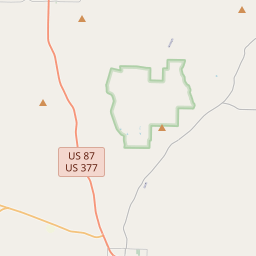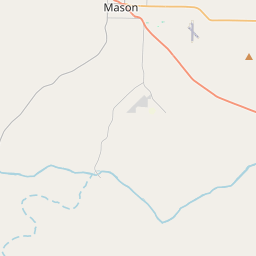Mason County Courthouse











Jurisdiction:
State Antiquities Landmarks (SALs) are designated by the Texas Historical Commission (THC) and receive legal protection under the Antiquities Code of Texas (the Code). The Code defines all cultural resources on non-federal public lands in the State of Texas as eligible to be designated as SALs. Historic buildings and other aboveground historic resources must be listed in the National Register of Historic Places before they can be designated as SALs, but archeological sites do not have the same prerequisite.
SAL designation does not mean that sites or buildings cannot be altered or destroyed. The land-owning agency must consult with the THC about such proposed actions through the permit process, and the THC will determine whether the work will be allowed.
Buildings designated as SALs are listed in the Texas Historic Sites Atlas. However, information about designated archeological sites is not available to the general public to protect the sites from vandalism and destruction.
The Alamo, a mission in San Antonio, is perhaps the most famous historical site in Texas. It was the site of a key battle during the Texas Revolution in 1836.
In 1858, Mason County was officially organized, named after Fort Mason, which had been established nearby in 1851. The town of Mason quickly developed and became a central hub for the surrounding ranches and agricultural activity. The economy was largely based on ranching and farming throughout the 19th century.
However, Mason County is also infamous for the "Mason County War" that occurred between 1875 and 1876. This conflict, primarily fueled by tensions between German settlers and Mexican-American residents, resulted in several violent skirmishes and feuds. The dispute was largely over cattle rustling and land ownership, and it claimed the lives of numerous individuals on both sides.
Over time, the tensions eased, and Mason County continued to grow and develop. Today, the county boasts a peaceful rural atmosphere with a mix of ranching, agriculture, and tourism. The historic downtown area of Mason has been well-preserved, and visitors can explore its old buildings, museums, and shops. Overall, Mason County's history is a testament to the challenges and successes of early settlers in Texas and the ongoing efforts to preserve its heritage.
Mason County Timeline
This timeline provides a glimpse into the major events and milestones that have shaped the history of Mason County, Texas.
- 1858: Mason County is established and named after Fort Mason.
- 1861-1865: Mason County suffers from the effects of the American Civil War.
- 1870: The town of Mason is incorporated.
- 1877: The Mason County Courthouse is constructed, which still stands today as the oldest continuously used courthouse in the state of Texas.
- 1887: The Mason County Jail is built, now listed on the National Register of Historic Places.
- 1900: The population of Mason County reaches its peak with over 10,000 residents due to the local granite industry.
- 1919: The granite industry declines, leading to a decrease in population.
- 1930: The population of Mason County drops to its lowest point in over a century.
- 1940s-1950s: Ranching becomes the leading industry in Mason County.
- 1974: The Eckert James River Bat Cave Preserve is established, providing habitat for millions of Mexican free-tailed bats.
- 2006: Mason County celebrates its 150th anniversary.